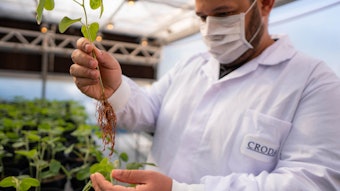
A version of this story first appeared in the May 2015 edition of Perfumer & Flavorist magazine.
Data is the buzzword in business today. While it can feel intangible or confounding, I like to think of data as nothing more than raw information that—when properly analyzed—helps to empower decision-making.
Further reading: Data-driven Beauty
For decades, getting to the truth of consumer preferences has been a difficult exercise. It has been a common beauty industry practice to buy expensive, retroactive consumer research to parse out what shoppers want. With the technology available to brands, there’s now more efficiency to capture.
Real-time data allows brands to craft better fragrance development proposals, uncover new retail channels, and improve sales tactics and hyper-target fragrance sampling. Shifting the moment of data-driven insight to the brand’s planning stage makes it an active, rather than reactive, process.
In this recurring column, I will be sharing insights from Poshly, a database about fragrance consumers derived from a data acquisition process that I launched in 2012. To date, the system stores more than 10 million consumers’ responses. But first, it’s important to share the details about how the system collects this data, and why.
How the Data Collection Works
In 2012, Poshly launched as a data collection destination in which consumers are encouraged to enter to win product giveaways by answering questions about themselves. Throughout each week, the editors post low-volume, cost-effective giveaways, such as nail polish and skin-cleansing products.
The system eschews long, mundane surveys for fast, conversational quizzes that net a 98% return rate within 60 days, and email open rates exceeding 70%.
There are more than 1,200 questions in the database today, covering a range of topics from fragrance to hair care, demographics to psychographics. New quiz questions can be created at any time by Poshly’s internal team, brands or publishers to gather real-time information.
The data is stored at the user-level, and is also anonymized and aggregated to provide high-level research insights. This breadth and depth creates a 360-degree view of each consumer, and allows for hyper-targeting consumers in sampling campaigns.
Distributed Data Networks
Poshly stores more than seven million consumer responses to date. Those responses can be cross-tabulated across demographics and other qualifications in order to uncover additional consumer insights.
The system has teamed with a network of media partners on high-traffic online destinations to ensure large respondent sample sizes and a steady stream of data.
What We Know About Fragrance
With an explosion of celebrity scents and niche perfumes in the marketplace, fragrance data has never been more crucial. According to data gathered by Poshly Insights, 52% of beauty consumers wear at least some kind of fragrance every day, and 72% of consumers say fragrance is a key part of their beauty routine.
In future columns, using the system’s real-time data, I will share insights into the consumer in-store experience, brand loyalty, the business of celeb-endorsed scents, the custom fragrance trend and more.
Your Questions
Is there a topic you want to ensure I cover in the coming months? Let me know. I am eager to hear your feedback. For now, it’s time to wake up and smell the fragrance data—one spritz at a time.










